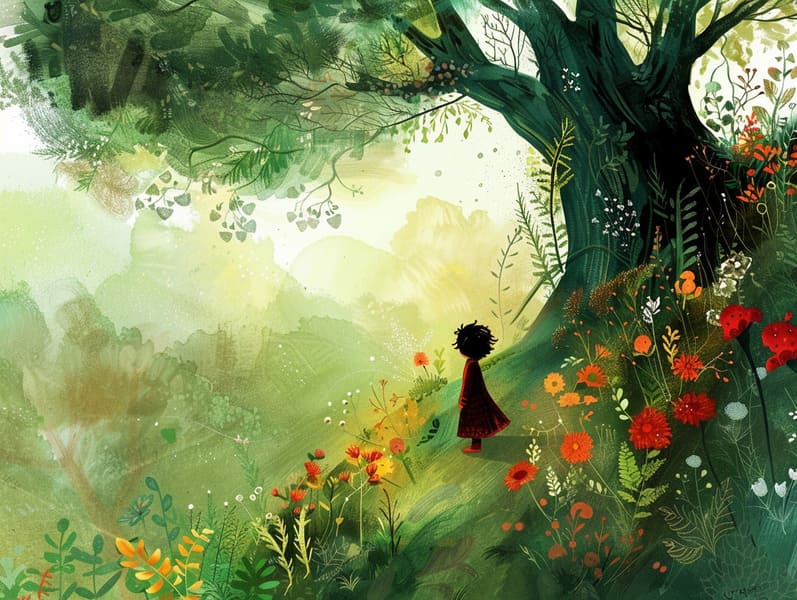The Origins of Traditional Fairy Tales and Its Ageless Beauty.
The Origins of Traditional Fairy Tales and Its Ageless Beauty.
Blog Article

Popular fairy tales have ancient roots. These tales have been whispered from one generation to the next ages before they were ever written down. They emerged from a variety of cultures, including Indigenous traditions. They were initially transmitted among elders, often carrying themes and messages concerning the societal norms and beliefs of the time.
The Grimm brothers, Jacob and Wilhelm, were among the first to gather and publish many of these beloved tales. Their anthology, "Grimm's Fairy Stories," included classics like "Cinder Maid," "The Bread Crumb Trail," and "Schneewittchen," which have since become classics in the world of traditional fairy tales. Similarly, H. C. Andersen's fanciful tales, such as "The Mermaid's Tale," and "The Duckling's Story," have gained the love worldwide, establishing their place in the pantheon of famous fairy tales.
Despite their age, these stories remain as significant as ever, especially as children's night stories. These whimsical stories are now available in numerous formats, including gorgeously illustrated books, magical animations, and digital storybooks.
Their ongoing significance can be attributed to several delightful features:
Significant Morals: Classic fairy tales often teach important moral lessons. Fairy tales like "The Shepherd Boy and the Wolf" teach the importance of truthfulness, while "The Story of the Tortoise and the Hare" highlight the virtues of steadfastness and meekness. These tales offer children clear distinctions between right and wrong, forming their moral compass in a kind yet lasting way.
Warmth and Understanding: Fairy tales frequently illustrate beings facing challenges and struggles, urging young listeners to empathize with their struggles and support their triumphs. For instance, "Beauty and Her Beast" conveys the significance of appreciating inner worth to perceive the inner being of a character, cultivating empathy and appreciation.
Cultural Comprehension: Many fairy tales are deeply embedded in the cultural contexts from which they bloomed. Learning from these narratives can provide informative snapshots into different backgrounds, building a sense of cultural awareness and respect.
Creativity and Fantasy: The fantastical elements in classic fairy tales—enchanted lands—fire up children’s dreaming abilities. These fairy tales move readers to fantastical realms, promoting creative thinking and a sense of awe that persists a lifetime.
Classic fairy tales are not only charming but also instructive. They act as bewitching tools in developing various mind and heart abilities in children. When old fairy tales are spoken, they promote speech development by introducing new language items and detailed sentence structures. This practice also develops hearing abilities and focus, as little ones follow the story, eager to see what happens next.
Furthermore, discussing the themes and characters of old fairy tales can strengthen evaluative skills and problem-solving abilities. Young ones are educated to discover patterns, anticipate outcomes, and figure out cause and effect. These analyses also further young readers voice their thoughts and feelings, adding to their emotional intelligence.
In today’s modern era, famous fairy tales for children the abundance of free fairy tales online has made these stories more attainable than ever. Websites and web apps offer huge assortments of traditional fairy tales that can be browsed or listened to anytime, anywhere. Fairy tales recited are particularly popular, offering an engaging way for young ones to delight in these mesmerizing stories. Audio stories and narrated videos carry characters and settings to life, often enhanced by delightful harmonies and music that raise the tale-telling adventure.
The lasting allure of classic fairy tales lies in their ability to alter to present eras while continuing with their fundamental ideas. Contemporary revisions of these tales often present more varied figures and modern settings, making them familiar to today’s audience. However, the underlying themes of gallantry, warmth, and righteousness remain unchanged, continuing to impact young listeners of all ages.
Timeless fairy tales also offer a sense of protection and recognition. They give a well-ordered narrative with a obvious beginning, middle, and end, often wrapping up with the resolution of conflicts and the triumph of truth over falsehood. This constancy can be calming for kids, furnishing a sense of steadfastness in an dynamic world.
Classic fairy tales continue to captivate and guide new generations, maintaining their attraction and relevance in modern society. As nighttime stories for kids, they furnish a perfect blend of charm and understanding, furthering moral values, empathy, and creativity. The availability of digital fairy tales and the likability of fairy tales narrated make sure that these traditional tales remain within reach to new generations.
By defending and narrating these tales, we continue to extol the rich tapestry of mythology and cultural heritage. Whether you are discovering a gorgeously illustrated book, seeing a electronic collection, or listening through an narrated book, the grandeur of old fairy tales is always within reach. These stories point out of the persistent nature of fairy tales and its ability to unify us across epochs and places.
Regardless if you are enjoying a vibrantly illustrated book, enjoying a cyber collection, or listening through an sound book, the delight of children's fairy tales is always within reach.
These stories reveal of the enduring effect of stories and its ability to bind us across time and space, creating a bond that charms and informs alike.